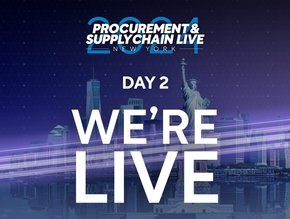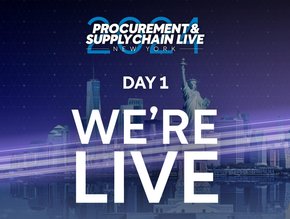The 'last mile' problem, by Parcel2Go

Written by Euan Coupland (pictured, right) on behalf of Parcel2Go.com, one of the UK’s leading independent courier companies
The metaphorical term ‘last mile’ originally referred to the difficulties faced by telecommunications providers in connecting homes to the local network hub, but has since been adopted by the logistics sector to describe the last leg of the supply chain. This last leg is often the least efficient link in the supply chain, comprising up to 28 percent of the total cost of the delivery. The ‘last mile’ problem also includes the challenges existing in the delivery of goods to urban areas where the hustle and bustle of the central business district contributes to congestion and can lead to safety issues.
How problematic can the ‘last mile’ be?
There are logistical challenges to face at every link in the supply chain, but the ‘last mile’ can be particularly tricky. One of the main characteristics of the ‘last mile’ that distinguishes it from other transportation legs is the home delivery aspect, which requires what is generally the sole contact between the supplier and consumer. It is here that the most care needs to be taken. Damage to the customer’s property must be avoided at all cost, and a pleasant manner maintained. The person delivering the goods is the representative of not just the company they work for, but for all the companies that have contributed over the length of the supply chain.
The notion of what actually constitutes the ‘last mile’ is also undergoing rapid change because business-to-consumer deliveries have expanded far beyond what was traditionally limited to heavy goods and high-value items. Today, the ‘last mile’ is populated by a huge variety of providers, with electronic appliances and clothing constituting over 40 percent of US e-commerce sales in 2012. The perception of what makes up the ‘last mile’ is being extended too, as many in logistics assert that what happens upstream of the delivery is also a part of the ‘last mile’ process. Currently this is murky territory, but as the definition is reappraised and further refined we can expect to see the ‘last mile’ problem grow as increasing demand puts strain upon the supply chain at an earlier stage. The face of the delivery industry has been forever changed by the rise in online retail, and solutions must be found to meet what will only be higher public expectation. Global sales for e-commerce reached $1 trillion in 2012.
Rick Rover, Senior Vice President of Operations for Streamlite, an Atlanta-based shipping solutions company, sums up the ‘last mile’ problem very succinctly: “The supply chain has been extended as a result of changes in consumer buying patterns. As people turn to the Web to purchase lighter-weight, less-expensive goods, and do so more frequently, the supply chain extends right to the mailbox.”
How can technology help?
Communication technology is steadily being introduced into the ‘last mile’, which keeps all the various parties involved in this stage automatically updated as to the progress of the delivery. Many people will be familiar with this through the ‘track your order’ feature that is becoming more common for eCommerce sites as they look to provide higher visibility, which adds to the public perception of service quality, effectively combining technology and customer service. Will O’Shea, Chief Sales and Marketing Officer for 3PD, admits that this is a vast improvement on past practice, when “the last mile was a black hole; there was no communication there.”
Another benefit of tracking technology is that deliveries can be monitored and then analysed so that the most consistent and predictable cost models can be determined. This reduces costs by identifying the most efficient means of delivering goods in the ‘last mile’, and highlighting any glaring issues that should be resolved. The cost models that can be formulated are especially important with the economy still in a fragile state.
In conclusion
The ‘last mile’ problem is growing in tandem with soaring e-commerce sales and, while technology offers better tracking systems and analysis tools that can optimise the delivery process, it is projected that retail sales made online in 2017 will be double that of 2012, at a whopping $434.2 billion. Logisticians will need to meet this problem head on and provide lasting solutions that can stand up to the demand we can expect to see in the coming years.






